NEBOSH IGC - Element 5 Physical and Psychological Health
Physical and Psychological Health Aspects for conducting IGC2 Risk Assessment (New Syllabus : October 2018)

What you will learn
The physical and psychological effects of exposure to noise, meaning of commonly used terms, basic noise control measures, • When exposure should be assessed
The effects on the body of exposure to hand–arm vibration and whole-body vibration, when exposure should be assessed, basic vibration control measures
Non-ionising and ionising radiation (including radon) and their health effects, occupational sources, controlling exposures, protection strategies
Frequency and extent of mental ill-health at work, common symptoms, causes and controls, home-work interface
Types of violence at work, jobs and activities which increase the risk of violence, control measures to reduce risks from violence at work
Risks to health and safety from substance abuse at work, control measures to reduce risks from substance abuse at work
Why take this course?
NEBOSH International General Certificate in Occupational Health and Safety Qualification consists of two Units (IGC1 & IGC2) as per new syllabus ie October 2018 Specification. As a part of examination requirement, IGC2 is a practical risk assessment to be conducted at the workplace and develop an action plan for the workplace.
This course will help you gain basic knowledge in the subject. Subject knowledge will help you to conduct Workplace Risk Assessment more effectively and professionally.
Enroll Now to the course!
As per new syllabus – October 2018 Specification for NEBOSH International General Certificate in Occupational Health and Safety Qualification (IGC) Element 5 consist of following aspects:
5.1 Noise
The physical and psychological effects of exposure to noise
The meaning of commonly used terms: sound pressure, intensity, frequency, the decibel scale, dB(A) and dB(C)
When exposure should be assessed; comparison of measurements to exposure limits established by recognised standards
Basic noise control measures, including: isolation, absorption, insulation, damping and silencing; the purpose, use and limitations of personal hearing protection (types, selection, use, maintenance and attenuation factors)
Role of health surveillance.
5.2 Vibration
The effects on the body of exposure to hand–arm vibration and whole-body vibration
When exposure should be assessed; comparison of measurements to exposure limits established by recognised standards
Basic vibration control measures, including: alternative methods of working (mechanisation where possible); low-vibration emission tools; selection of suitable equipment; maintenance programmes; limiting the time workers are exposed to vibration (use of rotas, planning work to avoid long periods of exposure); suitable PPE
Role of health surveillance.
5.3 Radiation
The types of, and differences between, non-ionising and ionising radiation (including radon) and their health effects
Typical occupational sources of non-ionising and ionising radiation
The basic ways of controlling exposures to non-ionising and ionising radiation.
Basic radiation protection strategies, including the role of the competent person in the workplace
The role of monitoring and health surveillance.
5.4 Mental Ill-Health
The frequency and extent of mental ill-health at work
Common symptoms of workers with mental ill-health: depression, anxiety/panic attacks, post-traumatic stress disorder (PTSD)
The causes of, and controls for, work-related mental ill-health (see the HSE’s Management Standards):
demands
control
support
relationships
role
change
Home–work interface: commuting, childcare issues, relocation, care of frail (vulnerable) relatives
Recognition that most people with mentalill-health can continue to work effectively.
5.5 Violence at work
Types of violence at work including: physical, psychological, verbal, bullying
Jobs and activities which increase the risk of violence, including: police, fire, medical, social workers, those in customer services, lone workers, those working with people under the influence of drugs and alcohol, those who handle money or valuables
Control measures to reduce risks from violence at work.
5.6 Substance abuse at work
Risks to health and safety from substance abuse at work (alcohol, legal/illegal drugs and solvents)
Control measures to reduce risks from substance abuse at work.
NEBOSH International General Certificate in Occupational Health and Safety Qualification (IGC) can help to reduce workplace injuries and illness and enhance employee wellbeing, IGC is invariably relevant to every workplace, any professional working in the field of workplace health and safety as well as to aspiring health and safety students.
Screenshots

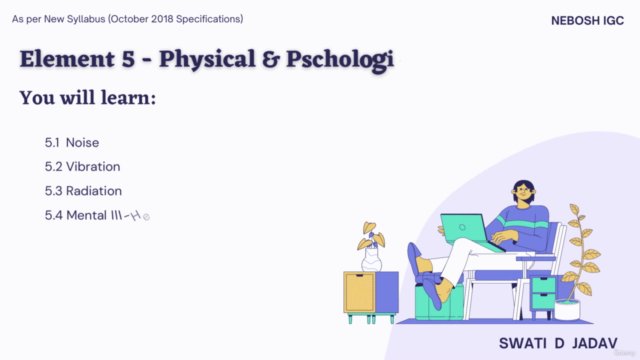
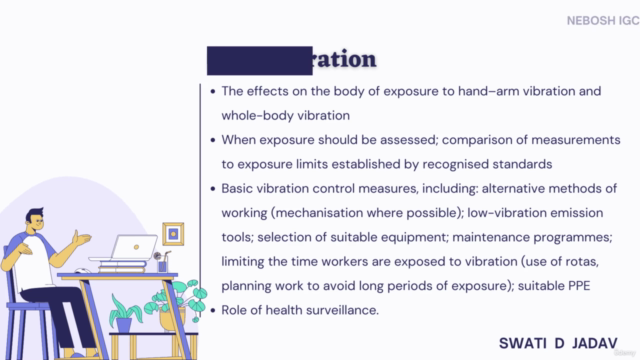
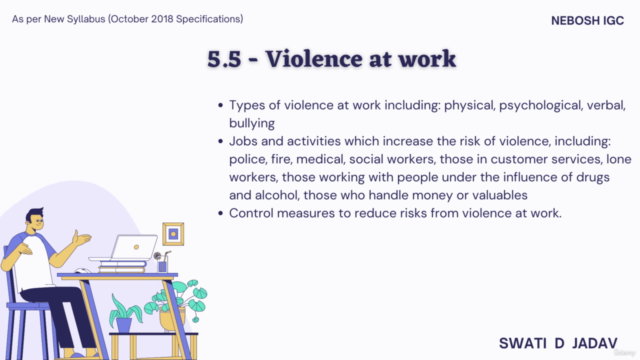
Charts
Price
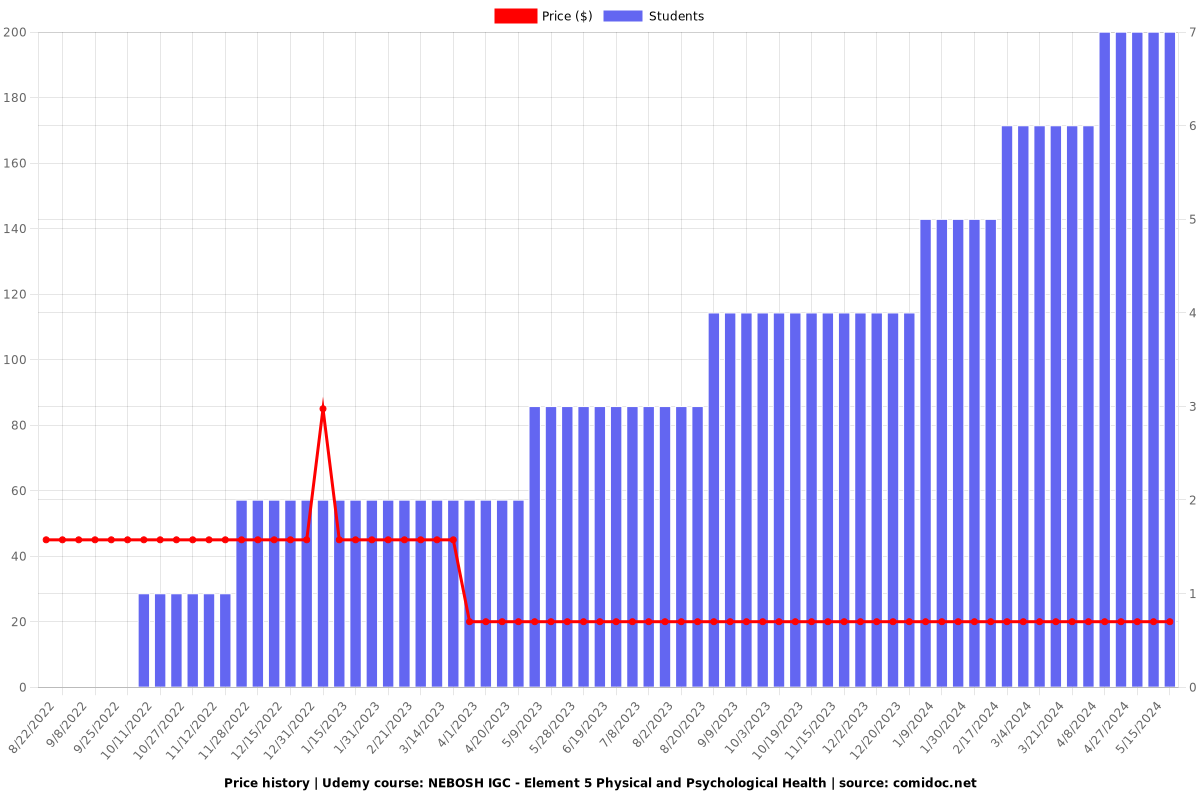
Rating
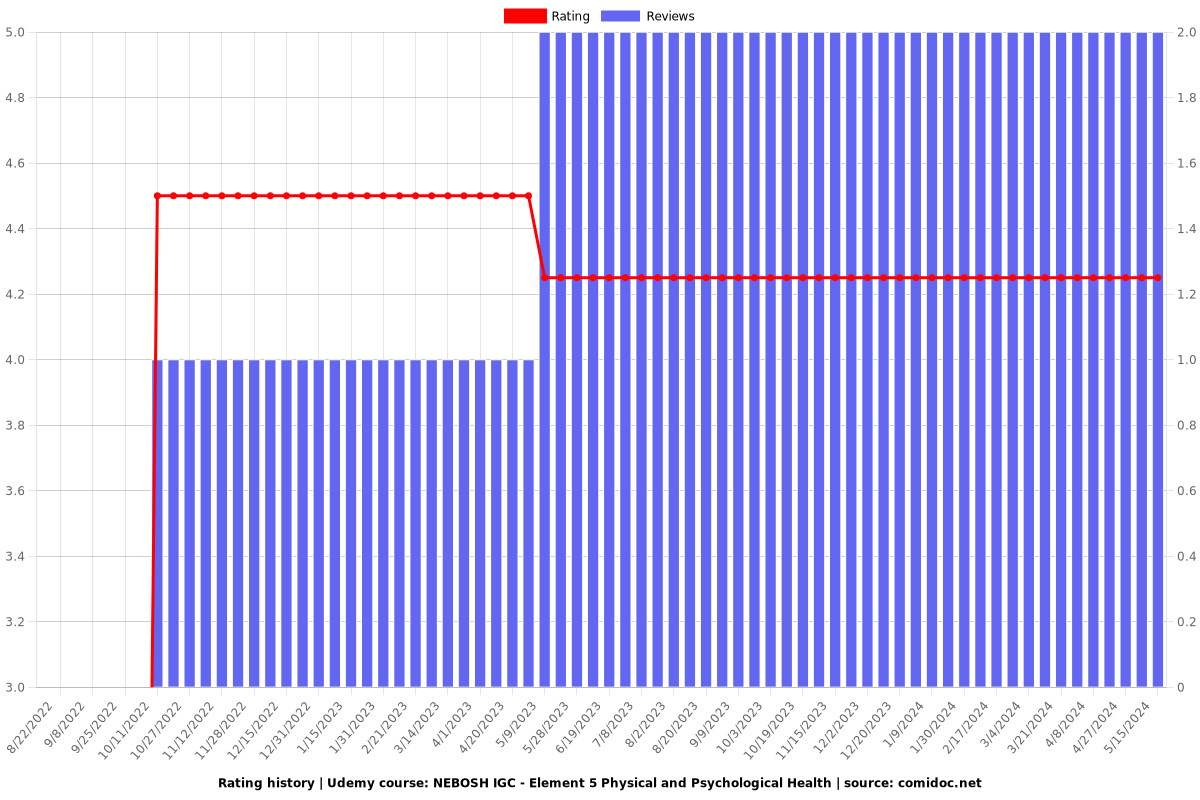
Enrollment distribution
